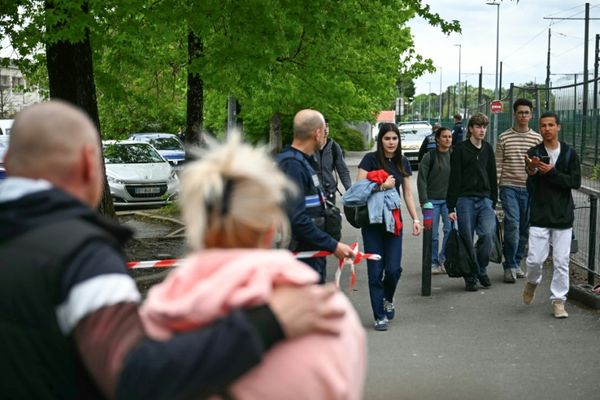
Satellite images have revealed the scale of Friday’s devastating landslide in Papua New Guinea, as thousands more residents were told to evacuate as fears grow that a second landslide is looming.
The images show the huge damage inflicted on a village in the remote province of Enga, which PNG’s National Disaster Centre said buried an estimated 2,000 people. The satellite pictures show mountains of debris covering buildings and blocking roads, which officials have said is hampering relief efforts.
Relief teams have been trickling into the difficult-to-access northern region since Friday, though officials said the odds of finding survivors were slim.
“The landslide area is very unstable. When we’re up there, we’re regularly hearing big explosions where the mountain is, there is still rocks and debris coming down,” Enga province disaster committee chairperson Sandis Tsaka told Reuters.
“The landslide is still active, as people are digging through the rocks, more is still coming down.”
A state of emergency has been declared across the disaster zone and a neighbouring area, with a combined population of between 4,500 and 8,000, although not all have been ordered to evacuate yet, Tsaka said.
International aid organisations said they were are working to send food, water and evacuation shelters to the region, but are facing challenges due to the remote location.
“This is an incredibly inaccessible part of Papua New Guinea and it’s a really challenging process for everyone involved,” Australia’s Pacific minister, Pat Conroy, said, as Canberra promised to send technical experts and $2.5m in initial aid.
“I’m advised access can only be achieved through helicopters, so the search and recovery efforts are very, very, challenging,” he told ABC News Breakfast on Tuesday.
Conroy described the situation as “incredibly grim”, adding that the true extent of the disaster wasn’t yet known.
The head of the International Organisation for Migration in PNG, Serhan Aktoprak, said conditions on the ground were hampering rescue and aid efforts. Rocks were still falling from the mountain, soil was cracking and water was flowing under the debris, he said.
Survivors have been hesitant to allow heavy machinery to be used in rescue efforts, because they do not want the bodies of their relatives harmed, said Aktoprak.
“We’re just hoping that in the remaining short window of time we have, we can at least contribute to the relief efforts in saving some more lives,” Aktoprak said. “But unfortunately, [time] is not on our side.”
Local residents have said they fear that the economic impact caused by the destruction of infrastructure like roads, could compound the effects of the disaster.
“The landslide hit our community hard. This road is our lifeline, our connection to the outside world for trade and supplies, and now it’s gone,” said Oscar Fredrick, a resident from the Tumundan Maup checkpoint.
Many of the small farms and food gardens that sustain the population were destroyed, as well as much of the local livestock. Three streams that residents rely on for drinking water were also buried by the landslide.
“Prices will skyrocket, essentials like fuel will become scarce,” another local resident said, saying that they fear a secondary, longer-term impact from the disaster. “We need our government to step in, to rebuild not just the road but our lives.”
Aktoprak said an estimated 6,000 people have been affected by the disaster so far. If survivors end up moving to urban areas, “this will trigger additional economic and social problems”.
PNG’s minister for defence, Dr Billy Joseph said the government was committed to rebuilding communities and bolstering disaster preparedness. “Our primary focus is on continuing relief and recovery exercises,” he said.
The Australian Associated Press and the Associated Press contributed to this report







